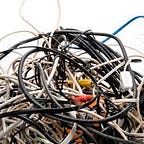Google Cloud Platform (GCP) is a popular cloud computing platform that offers a wide range of services and tools for building, deploying, and managing applications and infrastructure. As more and more organizations adopt GCP, it is important to understand how to conduct forensic analysis on GCP environments in order to investigate potential security incidents and comply with legal and regulatory requirements.
We’ve built a platform to automate incident response and forensics in AWS, Azure and GCP — you can grab a free trial here. You can also download a free playbook we’ve written on how to respond to security incidents in the cloud.
When conducting forensic analysis on GCP environments, it is important to follow a set of best practices in order to ensure the integrity of the evidence and the accuracy of the investigation. Here are some key best practices to keep in mind:
- Create forensic copies of disks and data: Before conducting any forensic analysis, it is important to create forensic copies of the disks and data that you will be investigating. This will ensure that the original evidence is not altered during the course of the investigation.
- Use authorized tools and methods: It is important to use only authorized tools and methods for conducting forensic analysis on GCP environments. This will ensure that the evidence is collected and analyzed in a manner that is consistent with legal and regulatory requirements.
- Document the investigation: It is important to carefully document every step of the forensic investigation, including the tools and methods used, the findings, and any conclusions reached. This will help to ensure the accuracy and integrity of the investigation.
- Maintain the chain of custody: The chain of custody is the record of who has had custody of the evidence during the course of the investigation. It is important to maintain the chain of custody in order to ensure that the evidence has not been tampered with or altered.
Tools for GCP Forensics
There are a number of tools available for conducting forensic analysis on GCP environments. Some of the key tools to be aware of include:
Making a disk image for analysis — the manual way
To create a forensic disk image of a virtual machine in Google Cloud, you will need to use a tool like dd to create a raw bit-by-bit copy of the virtual machine's disk. This process is sometimes called "cloning" the disk.
Here is an example of how you could create a forensic disk image of a virtual machine in Google Cloud using dd:
- Start by connecting to the virtual machine using
gcloud compute sshor another method. - Run the
df -hcommand to show the available disk space on the virtual machine. Make sure you have enough space to create the disk image. - Run the
lsblkcommand to list the block devices attached to the virtual machine. Identify the device that represents the disk you want to clone (e.g./dev/sda). - Use the
ddcommand to create a raw bit-by-bit copy of the disk. For example, if the device you identified in the previous step was/dev/sda, you could run the following command to create a forensic disk image:
sudo dd if=/dev/sda of=forensic-disk-image.img5. The dd command will run until it has completed creating the disk image. This can take a while, depending on the size of the disk.
6. Once the dd command has finished, you will have a forensic disk image of the virtual machine's disk. You can use this disk image to conduct a forensic analysis of the virtual machine.
Making a disk image for analysis — the smart way
The libcloudforensics library is a collection of tools and utilities for conducting forensic analysis on cloud computing environments. It is written in Python, and can be installed using pip:
pip install libcloudforensicsOnce the library is installed, you can use it in your Python code by importing it:
import libcloudforensicsThe libcloudforensics library includes a number of different tools and utilities that can be used for forensic analysis on cloud environments. Some examples of the types of things you can do with the library include:
- Extract metadata from cloud resources (e.g. virtual machines, storage buckets, etc.)
- Analyze network traffic and logs from cloud environments
- Create forensic disk images of cloud virtual machines
- Conduct digital forensic investigations on cloud environments
To learn more about the specific features and capabilities of the libcloudforensics library, you can read the documentation at https://libcloudforensics.readthedocs.io/.
Using GCP Log Explorer
Once you are logged in to the GCP console, you can access Log Explorer by following these steps:
- In the GCP console, navigate to the Logs Viewer page by clicking on the “Logs Viewer” link in the “Monitoring” section of the left-hand menu.
- On the Logs Viewer page, you will see a list of your GCP projects on the left-hand side. Select the project that you want to view logs for.
- Once you have selected a project, you will see a list of log types for that project in the main area of the page. Select the log type that you want to explore.
- After selecting a log type, you will be taken to the Log Explorer page for that log type. On this page, you can use the search box and filters to find specific log entries, and you can use the timeline chart to see how the logs have changed over time.
- You can use the log entry details panel on the right-hand side of the page to view more information about a specific log entry, and you can use the options in the top right corner of the page to export or delete log entries.
GCP Log Explorer is a powerful tool that allows you to quickly and easily search, filter, and analyze your GCP logs. By using Log Explorer, you can gain valuable insights into the behavior of your GCP resources and troubleshoot issues more efficiently.
For more, see this video from Google:
